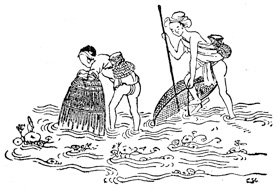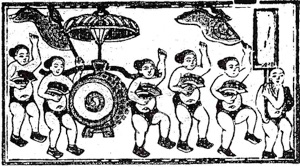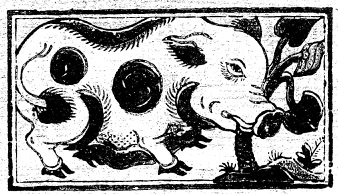MOON & WIND Huong Thanh (1999 ACT 9269-2
The Soaring of the Heron (Cò La) 6:37
All is Peace (Ru Con Miên Bac) 4:19
One River Two Streams (Sâm Huê Tinh) 5:47
Lovers on the Mountain (Bài Ca Trên Nui) 5:27
Crossing the Bridge (Ly Qua Cau) 4:49
Autumn Wind (Bài Ca Ru Con) 5:12
Blackbird Song (Ly Con Sao) 5:32
The Awaiting (Hò Huê) 8:04
Going Back to Hué 6:20
The Source (Côi Nguôn) 5:01
Total time 57:49
Produced, arranged*, engineered** & mixed by Nguyên Lê
from 08/1998 to 02/1999 in studio Louxor, Paris Barbès.
*except « All is Peace » arranged by Dominique Borker &
« Going Back to Hué » arranged by N. Lê & D. Borker.
**except « Coming Back to Huê » recorded live by Hervé Stauch in Le Blanc Mesnil, 17/04/1996
Translations by Nguyên Hong, Nguyên Lê & Bix. Executive Producer Siegfried Loch
© & (p) 1999 by ACT Music, Germany
Huong Thanh vocals
Nguyên Lê electric & acoustic guitars, fretless bass, synths & computer programming
Hao Nhiên Pham bamboo flute, 3-stringed lute (dàn dày)
Duong Tam 16-strings zither (dàn tranh), moon shaped lute (dàn nguyêt), lotus lute
(dàn sen), monocorde (dàn bau), woodblock (song lan), backing vocals
Dominique Borker acoustic piano, synths
Illya Amar sanza
Tino di Geraldo cajon, frame drum, palmas
Karim Ziad gumbri
Paolo Fresu trumpet
Eastward, something else...
Huong Thanh is not unknown to those who like and appreciate Vietnamese traditional music. As her father was Huu Phuoc, a great cai luong (1) artist, the water-like arpeggios of the dàn tranh, the 16-string zither, or the melancholy plaint of the dàn bàu, the monochord, have always been part of her life. But not satisfied with just following the path paved by her ancestors, Huong Thanh manifests a sincere will to, on the one hand, sing everything, i.e. every kind of Vietnamese traditional music, wherever it comes from – North, Centre or South – and on the other hand, open up to the world as well as modernity. Disregarding the prejudices of the purists, she does not hesitate to play all modes and every repertoire.
Moon and Wind , her first solo album, created by her producer and friend Nguyên Lê, provoked many a surprising encounter: on “One River, Two Streams”, a lovesong which probably goes back to the XVth century, Huong Thanh sings accompanied by the Berber gumbri player(2) Karim Ziad. (He owed her that one: she sang on the Maghreb & Friends album). «The Soaring of the Heron », a melody all vietnamese people have sung, hosts an unexpected guest: Tino di Geraldo, ubiquitous Flamenco artist from Madrid, with his palmas (3) and his cajón (4). Happy accident, not so accidental, as it were, for it seems that both musical sensiblities blend into one intense emotion: Huong Thanh's voice is reminiscent of flamenco's sensuality.
Thus, encounters and blends all concocted by Nguyên Lê, who had already made Huong Thanh sing on his Tales From Viêt-nam (1995, ACT 9225-2), and without whom, she would never have taken the first step… Like him, she proves that cross-culture is no lesser culture, if the mixing is true, and the understanding of the other people and culture really means something, not just a superficial mixture with commercial ends.
But Huong Thanh, remember, is a child of the tradition and also comes from the Mekong region, a mix of different cultures. So like that land's first settlers come from the North, who had to conquer and assimilate the original traditions (Chinese, Cham, Khmer and Montagnard), Huong Thanh, today a Vietnamese exile living in Paris since 1977, had in turn to feed on this outside world, that has become like a second home to her.
Through the grace of her vocal presence, Huong Thanh just reminds those who might have forgotten, that Viêt-nam, despite her regional diversity, is one, and at the same time, need partake of universal culture.
Sean James Rose
(1) cai luong: “renovated theatre”, a theatrical art based on songs and dances, created in 1916 in the South of Vietnam.
(2) gumbri: three-string lute, “the bass of the desert ”, representative of Gnawa music.
(3) palmas: hand-clapped rhythmic combinations.
(4) cajón: wooden box, an essential percussion in flamenco. New Sounds from the World
The New Sounds of the World
Let’s redefine « World Music » as the new identity the children of the diaspora are building between the streams of today and the search for the deepest tradition. As we have lived here, we have integrated the tools of the West to create our own culture. From Tales from Viêt-nam to Moon and Wind, I have always tried to weave the threads of those encounters where each one, with his own culture, can give the best of himself. So many things are yet to be shared !
Nguyên Lê
A l'Est quelque chose de nouveau…
Huong Thanh n'est pas tout à fait inconnue de ceux qui aiment la musique vietnamienne traditionnelle. Fille de Huu Phuoc, grand chanteur de cai luong (1), les arpèges fluides de la cithare à seize cordes, dàn tranh, ou les accents mélancoliques du monocorde, dàn bàu, lui sont familiers. Mais, non contente de se ranger dans le sillon tracé par ses pères, Huong Thanh affiche une franche volonté, d'une part, de tout chanter, c'est-à-dire toutes les traditions vietnamiennes d'où qu'elles viennent – du Nord, du Centre ou du Sud – et, d'autre part, de s'ouvrir au monde et à la modernité. Elle n'hésite pas, au dam des puristes, à jouer sur tous les registres et tous les modes, et de se jouer de tous les préjugés.
Moon and Wind, son premier album solo, réalisé par son producteur et ami Nguyên Lê, suscite de surprenantes rencontres : dans “One River, Two Streams”, chant d’amour dont l’origine remonte peut-être au XVe siècle , Huong Thanh chante aux côtés du Berbère Karim Ziad, joueur de gumbri (2) (juste retour des choses : elle avait chanté sur le disque Maghreb & Friends). «The Soaring of the Heron », mélodie que tous les vietnamiens ont fredonné, accueille un invité inattendu : Tino di Geraldo, de Madrid, avec ses palmas (3) et son cajón (4). Un heureux hasard, pas si fortuit, deux émotions qui communient dans une même intensité – la présence vocale de Huong Thanh fait comme écho à la sensualité du flamenco.
Mélanges et rencontres, donc, orchestrés par Nguyên Lê qui l'avait déjà fait chanter sur son Tales from Viêt-nam (1995, ACT 9225-2) et sans lequel, Huong Thanh n'aurait sans doute pas franchi le pas… Comme lui, elle prouve que le métissage n'est pas synonyme d'abâtardissement culturel, si l'osmose est réelle, s'il y a intelligence des gens et des choses, et non superficielle cuisine à fins mercantiles.
Mais Huong Thanh, rappelons-le, est enfant de la tradition et native de cette terre de brassage qu'est la région du Mékong. De la même manière que ces pionniers vietnamiens, venus du Nord, durent assimiler traditions chinoise, cham, khmère et montagnarde…Huong Thanh, aujourd'hui Vietnamienne de l'étranger, installée à Paris depuis 1977, s'enrichit de cet ailleurs qui par la force des choses est devenu une patrie.
Huong Thanh, par la grâce du chant, rappelle à qui l'eût trop vite oublié que le Viêt-nam malgré ses diversités régionales n'est qu'un et que ce pays de l'Asie du Sud-Est participe aussi de l’universel.
Sean James Rose
(1) cai luong : “Théâtre rénové “, forme de théâtre chanté et dansé, créée en 1916 au Sud Viêt-nam.
(2) gumbri : luth à trois cordes, la “basse du désert”, emblématique de la musique Gnawa.
(3) palmas : combinaisons rythmiques de battements de mains.
(4) cajón : caisse en bois, percussion essentielle du flamenco.
Les Nouveaux Sons du Monde
Redéfinissons la « World Music » comme la nouvelle identité des enfants de la diaspora, construite entre les flux de la modernité & la recherche de la tradition la plus profonde. Vivant içi, nous avons appris les instruments & les procédés occidentaux pour créer une culture qui nous correspond et dont nous avons besoin. Depuis Tales from Viêt-nam, en passant par Moon and Wind, j’ai toujours cherché à tisser les fils de ces rencontres pour que chacun, à partir de sa propre culture, puisse exprimer le meilleur de soi. Tant de choses restent à dire et à partager !
Nguyên Lê







